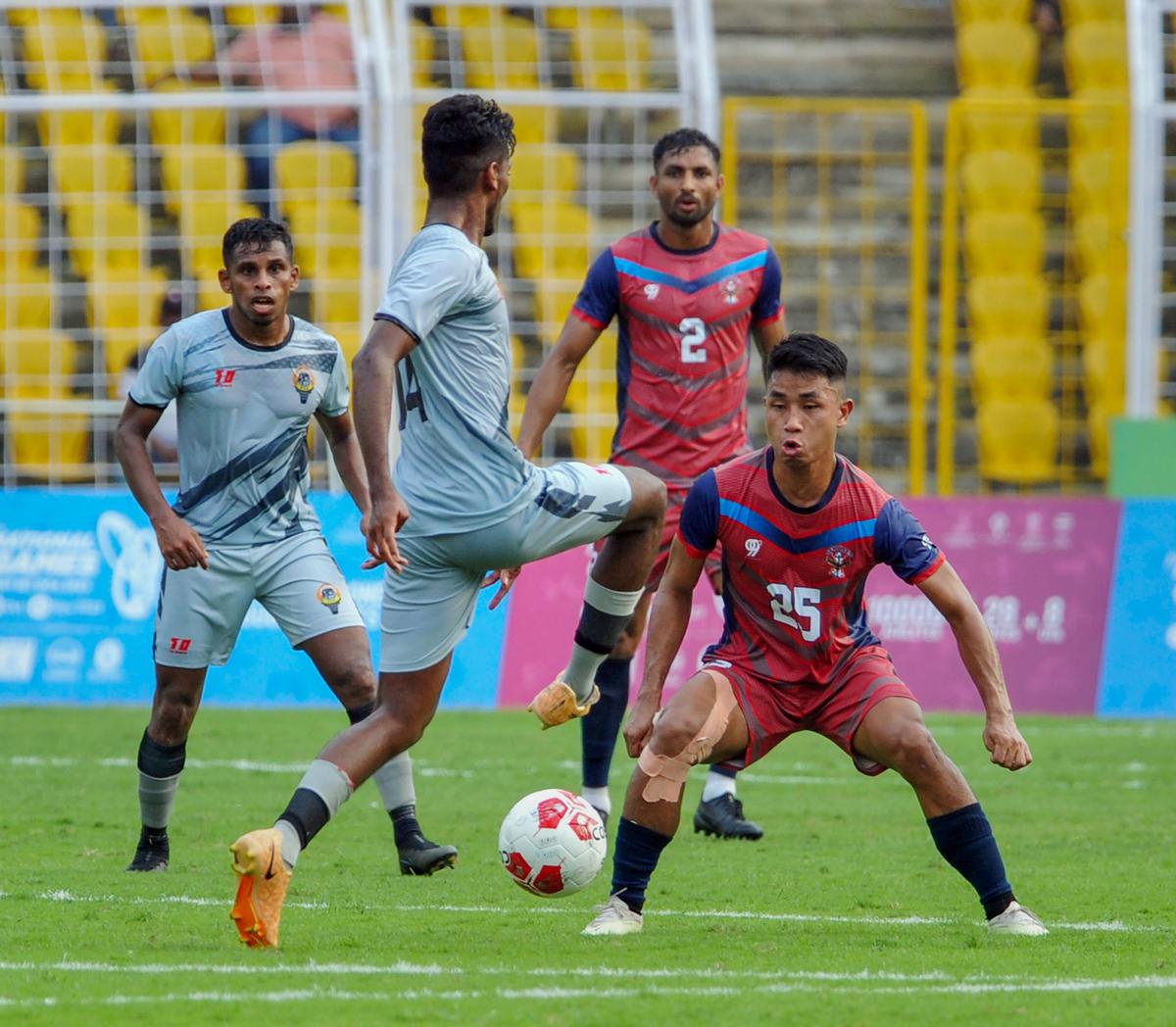National Games review: Despite poor scheduling, event provides stepping stone to Paris Olympics, showcases Goa’s potential

[ad_1]
After a challenging season, marked by his failure to touch 8m, long jumper Muhammed Anees sought redemption at the 37th National Games in Goa.
The 27-year-old from Kollam, Kerala, had been troubled by knee pain, hamstring and popliteus muscle issues this year, forcing him to miss the Asian Championships, World Championships and the Asian Games. Upon arriving in Goa, Anees, determined to capitalise on his improved form, clinched the gold with a jump of 8.15m, matching his personal best.
“I was confident of crossing the Olympic entry standard of 8.27m. Although I was in a 8.30m+ kind of form, I couldn’t get it,” he said in a chat with Sportstar.
Notably, several prominent athletes, including javelin thrower Annu Rani, quarter-miler Amoj Jacob, and middle-distance runners Harmilan Bains, Jinson Johnson, and Ajay Kumar Saroj, were absent in Goa. This absence was reasonable given their exhaustion after a demanding season.
The National Games was held at a time when most athletes had concluded their seasons in order to rest and recover for the Olympics next year.
Still, their inclusion in the start list was rather strange!

Rock solid: Services (in red) took the men’s football title after beating Manipur 3-1 in the final.
| Photo Credit:
PTI
Rock solid: Services (in red) took the men’s football title after beating Manipur 3-1 in the final.
| Photo Credit:
PTI
Among the participating athletes, though, were sprint hurdler Jyothi Yarraji, long jumper Ancy Sojan, decathlete Tejaswin Shankar, and javelin throwers Kishore Kumar Jena and Shivpal Singh.
“I just wanted to relax here. I wanted to see what sort of a performance I can do when I’m in that state of mind,” said Asian champion Jyothi, who won the women’s 100m hurdles gold quite comfortably.
Away from the track, Srihari Nataraj (below) dominated the swimming circuit, securing eight golds, including four in relays, at the Campal Sports Complex.
“(It has been) quite a long year, (with) ups and downs. (The) Asian Games was good but not the way I intended it to be. And coming into the National Games, I didn’t immediately get back into training. Therefore, I wasn’t really sure what to expect. But the goal was to help Karnataka do well,” he said.
Srihari was declared the best male athlete of the event while gymnasts Sanyukta Kale (Maharashtra) and Pranati Nayak (Odisha) were the best among the women.
Maharashtra, which dominated gymnastics, mallakhamb, modern pentathlon, pencak silat, yoga, triathlon and kho kho, was the eventual champion with 228 medals, including 80 golds.
Services, champions since the 2007 Games in Guwahati, settled for second place (126 medals, 66 golds) while Haryana (192 medals, 62 golds) finished third..
Services did well in weightlifting, rowing, boxing, athletics and aquatics, and also took the men’s football title after beating Manipur 3-1 in the final.

Way of the water: Srihari Nataraj dominated the swimming circuit, securing eight golds, including four in relays.
| Photo Credit:
PTI
Way of the water: Srihari Nataraj dominated the swimming circuit, securing eight golds, including four in relays.
| Photo Credit:
PTI
Odisha won the women’s football trophy beating Manipur 4-2 while Punjab men and Kerala women triumphed in basketball.
Originally scheduled to be held in November 2016, the Goa National Games attracted nearly 11,000 athletes this year.
Despite the prolonged wait, the event provided athletes with an opportunity to qualify for the Paris Olympics through World rankings, with an eye on the entry window that closes in June next year.
Also, the successful hosting of the event showcased Goa’s potential for future national events, particularly in athletics.
“The runway, pit and the conditions at the GMC Athletics Stadium in Goa appeared to be ideal for long and triple jump. Venues like this will produce quality performances,” said S. Murali, the father and coach of Asian Games silver medallist M. Sreeshankar.
These quality performances include those by long jumpers Anees, Ancy and Nayana James, triple jumper A.B. Arun, N.V. Sheena and sprinter V.K. Elakkiyadasan, who either came close to or bettered their personal bests.
Indian athletes have often had to compete in hot and humid conditions at venues with poor facilities during domestic meets.
But considering the Olympic year ahead in 2024, the Athletics Federation of India may find Goa a favourable option for the next competition calendar.
[ad_2]
